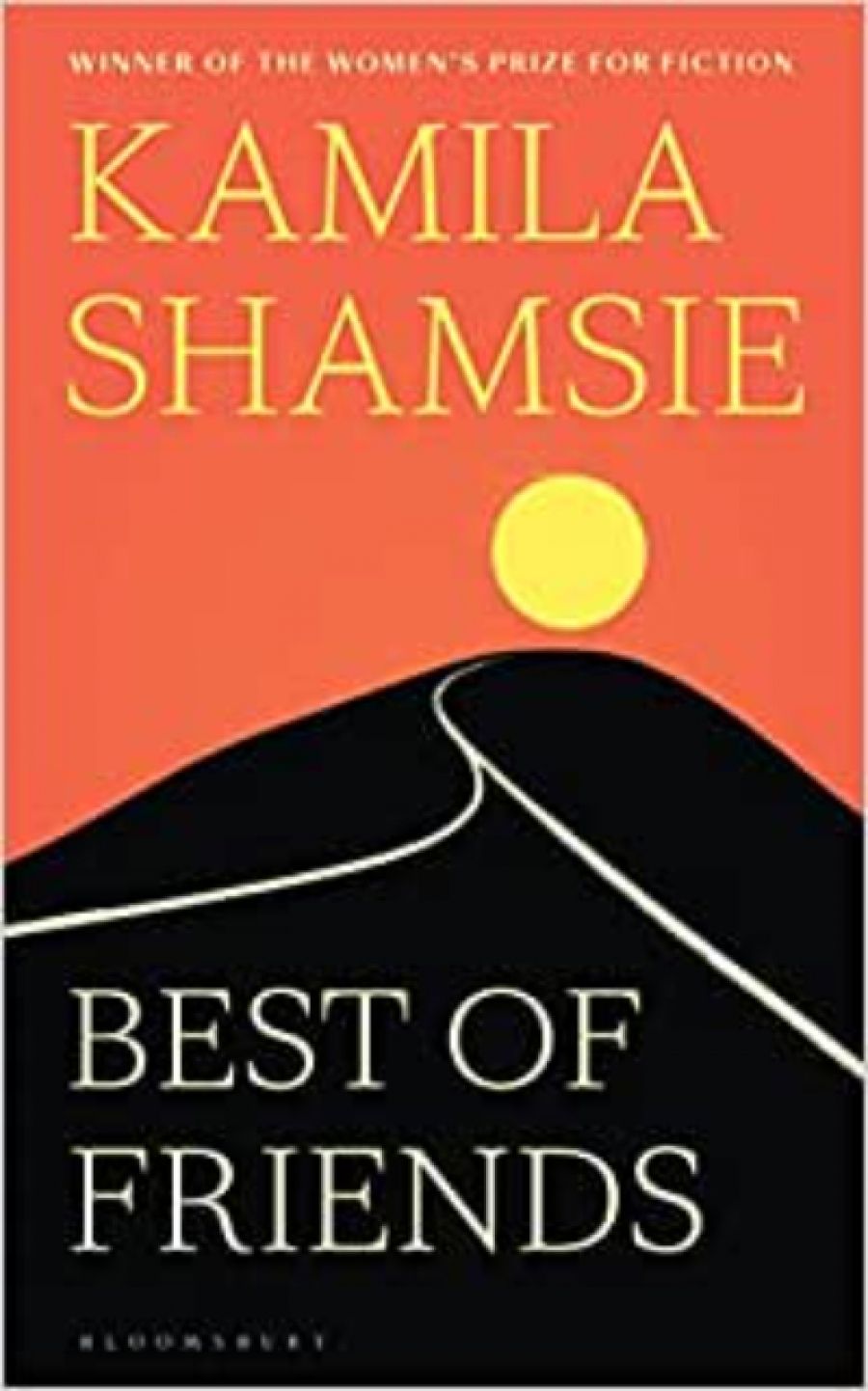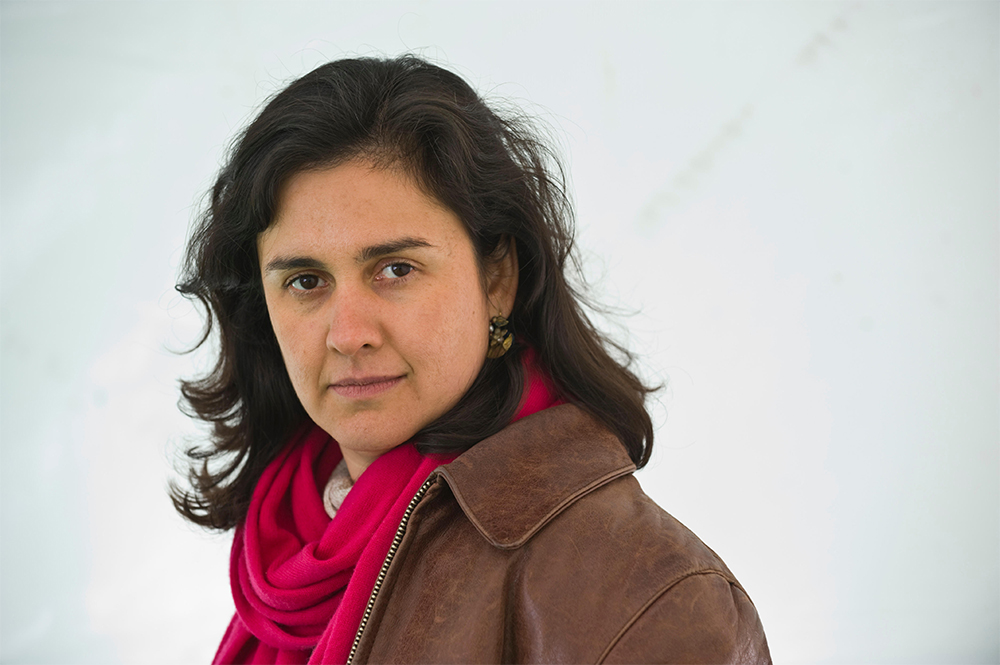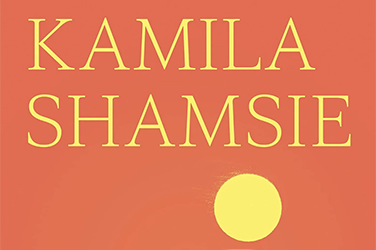
- Free Article: No
- Contents Category: Fiction
- Review Article: Yes
- Article Title: Vivid worlds
- Article Subtitle: A new novel from Kamila Shamsie
- Online Only: No
- Custom Highlight Text:
During the pandemic lockdowns in the world’s most locked-down city, I made a survey of the reading habits of friends and acquaintances. While nineteenth-century classics were popular – Austen and Dickens were favourites, Tolstoy too, and Middlemarch – realist fiction, in general, dominated the reading choices. Among Australian writers were Christina Stead, Jessica Anderson, and Heather Rose. Other contemporary writers included Chimamanda Ngozi Adichie and Patrick Gale. One friend read umpteen novels from the Indian subcontinent; it was, she said, her best travel option given the circumstances. Another friend decided to read all of Bellow; he wanted, he said, to discover what everyone had been raving about. At a time when our own life stories were severely curtailed, there was a surge towards the big stories of others.
- Article Hero Image (920px wide):

- Article Hero Image Caption: Kamila Shamsie (photograph by Jeff Morgan/Alamy)
- Alt Tag (Article Hero Image): Kamila Shamsie (photograph by Jeff Morgan/Alamy)
- Featured Image (400px * 250px):

- Alt Tag (Featured Image): Andrea Goldsmith reviews 'Best of Friends' by Kamila Shamsie
- Book 1 Title: Best of Friends
- Book 1 Biblio: Bloomsbury Circus $29.99 pb, 315 pp
- Book 1 Readings Link: booktopia.kh4ffx.net/2rvRQO
The primary source for realist fiction is people and their life and times, thus ensuring plentiful and ever-changing raw material. Realist fiction can transport a reader to foreign environments and, at the same time, clarify the reader’s own life circumstances. The best of realist fiction is propelled by creative characterisation, rich ideas, compelling language, authentic settings, and narrative muscle. With realist fiction, you enter a world that appears as if real, and so complete and engaging you do not want to leave. These are exactly the characteristics of Kamila Shamsie’s novels. Since 1998 and the publication of her first novel, In the City by the Sea, through to her eighth novel, Best of Friends, she has shown herself to be a writer for these complex and uncertain times.
Shamsie was born and raised in Karachi. She attended university in the United States, and in 2007 she made London her primary home. Her work has received many prizes and shortlistings, most particularly her seventh novel, Home Fire (2017). This novel, drawing inspiration from Antigone, tells an unforgettable story of belief, family ties, identity, and Islamic fundamentalism. The lives of her characters, the ideas she explores, her creative and effective use of narrative structure, and her deft and evocative language make her one of the most absorbing of contemporary authors.
Best of Friends opens in 1988 Karachi, at the time of the death of Muhammad Zia-ul-Haq and the democratic election of Benazir Bhutto. The best friends of the title are fourteen-year-old Zahra and Maryam. Zahra’s mother is a teacher, and her father is a renowned cricket journalist, giving Shamsie, a cricket devotee, the opportunity to air one of her great passions. In contrast to Zahra’s middle-class background, Maryam comes from a wealthy business family. Khan Leather is run by Maryam’s beloved grandfather. Despite being a girl, Maryam expects to inherit the business from her grandfather, while Zahra, a top student, has her sights set on Oxbridge.
Shamsie creates their world so vividly, swapping the point of view from one to the other. At fourteen, the girls have reached the age when prohibitions against women in Pakistan’s society have gained traction. At the same time as they relish the election of a female president and all the hopes and possibilities this presages, they find themselves subject to increasingly repressive forces in daily life. In their innocence and their budding sexuality, they are vulnerable to the worst that can happen to a Karachi girl of good family, namely, a spoiled reputation. In that culture it takes little to wreck a girl’s future.
A crucial event occurs that will shadow the girls for decades to come. Shamsie’s portrayal of this pivotal incident is sharp and tense, and so authoritatively paced that the fear and confusion experienced by the girls, and the tension of their situation is, literally for this reader, breath-stopping. The immediate fallout of the event involves a test of friendship where the blame is shouldered by one of the girls in order to protect the other.
The second half of the novel shifts to London, 2019, and opens with two newspaper articles. The first focuses on Zahra, a barrister turned prominent human rights figure, who heads the Centre for Civil Liberties; the other is an interview with Maryam, now a leading venture capitalist. In a few short pages we learn about the public life and achievements of the two friends, now in their mid-forties. It is a nifty device with irresistible narrative momentum.
The women have chosen such different paths – not surprising given that they were such different girls. Zahra works against the government of the day, while Maryam is happy to work with the government if it means her various financial ventures are more likely to succeed. Zahra lives and breathes social justice, Maryam seems untouched by the various injustices that abound at home and abroad. Zahra, single after a short-lived marriage, is partial to short-and-sharp, no-ties sex, while Maryam lives in a family situation with her partner and child.
Without warning, the crucial event of their childhood gatecrashes their London lives, and the friendship that has withstood so many differences finds itself on perilous ground.
The ending to Best of Friends, a mere twenty pages, does not gel with me. The reader has been immersed in a friendship that has weathered fundamental political and social differences, as well as diametrically opposed personal choices. The ruction that occurs would not – given how well Shamsie has portrayed this complex friendship in the rest of the novel – be so profound. But the ending aside, Shamsie illuminates the fascinating messiness of human relations in this powerful and engrossing novel. Throughout her work, Shamsie has created characters who reveal what it is to be different. With wisdom and fictional flair she has shown how the dominant group in society need never reflect on their power and privilege, while those who are oppressed can never forget it.


Comments powered by CComment